Business Operation: Task 1 & 5 - Analyzing UK Business Operations
VerifiedAdded on 2023/02/03
|13
|900
|81
Homework Assignment
AI Summary
This assignment delves into the operational aspects of UK businesses, focusing on Task 1 and Task 5. It begins by defining various types of organizations, including sole proprietorships, partnerships, and franchisees, and differentiates between private and public sectors. It explores different organizational structures within businesses, such as functional, line and staff, divisional, matrix, and project structures. The assignment then examines the impact of the business environment on Tesco, highlighting challenges like high unemployment, substitutions, competition, and innovations. Finally, it assesses the impact of customer service on business success and outlines the benefits of customer profiling, emphasizing better communication, increased opportunities, reduced competition, and customer attraction. The assignment provides a comprehensive overview of business operations in the UK context, with a specific focus on Tesco and customer service strategies.
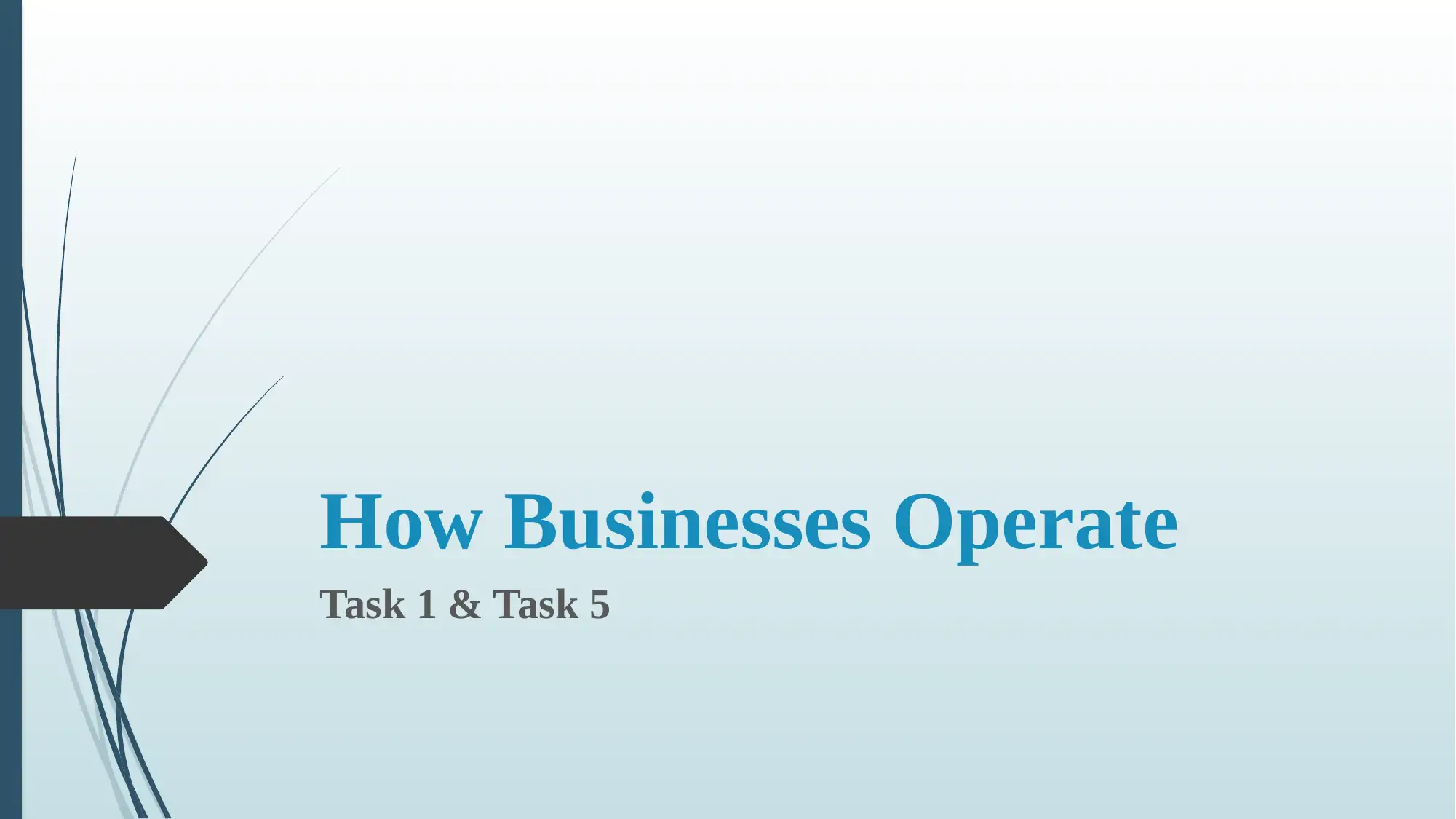
How Businesses Operate
Task 1 & Task 5
Task 1 & Task 5
Paraphrase This Document
Need a fresh take? Get an instant paraphrase of this document with our AI Paraphraser
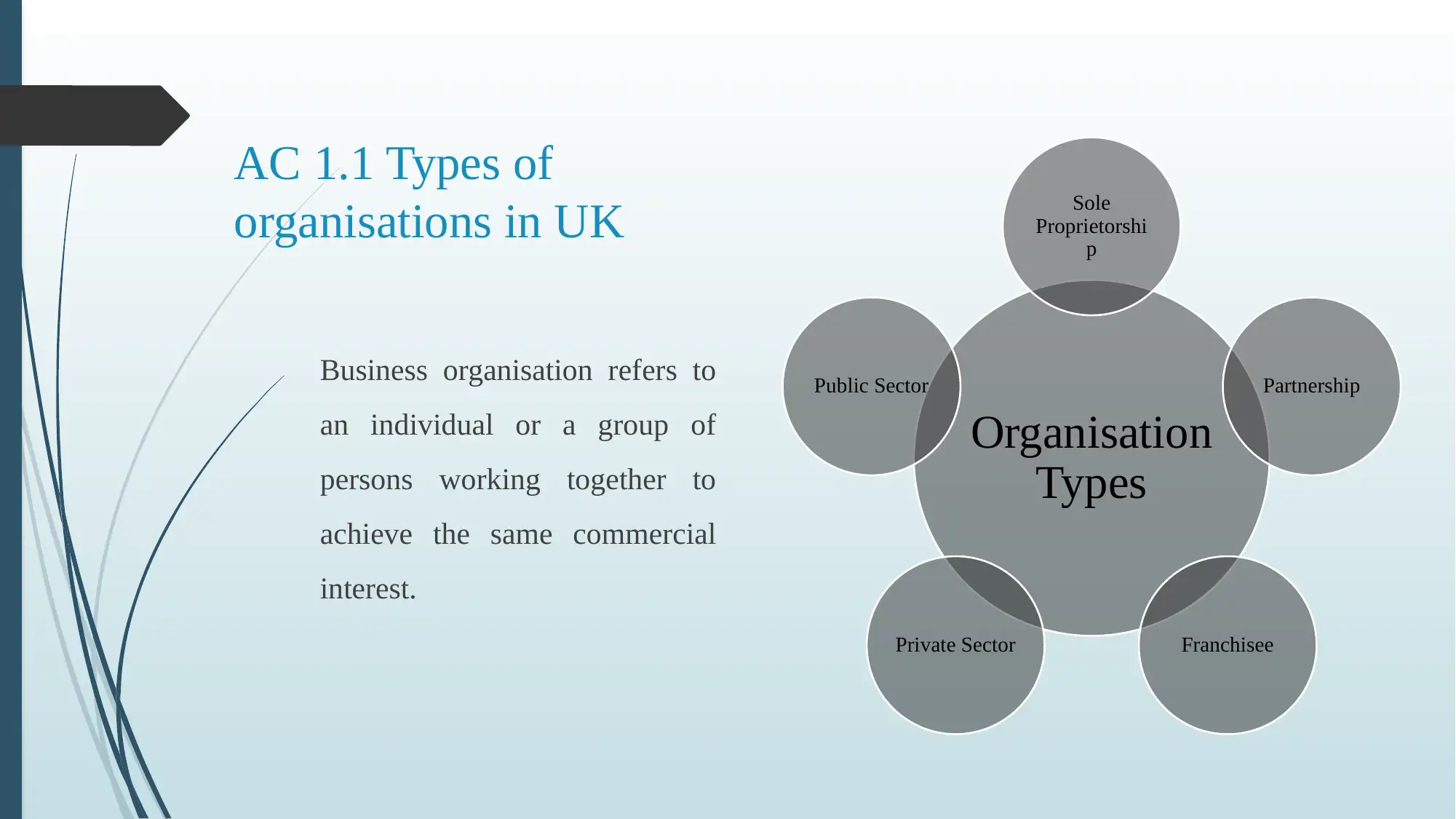
AC 1.1 Types of
organisations in UK
Business organisation refers to
an individual or a group of
persons working together to
achieve the same commercial
interest.
Organisation
Types
Sole
Proprietorshi
p
Partnership
FranchiseePrivate Sector
Public Sector
organisations in UK
Business organisation refers to
an individual or a group of
persons working together to
achieve the same commercial
interest.
Organisation
Types
Sole
Proprietorshi
p
Partnership
FranchiseePrivate Sector
Public Sector
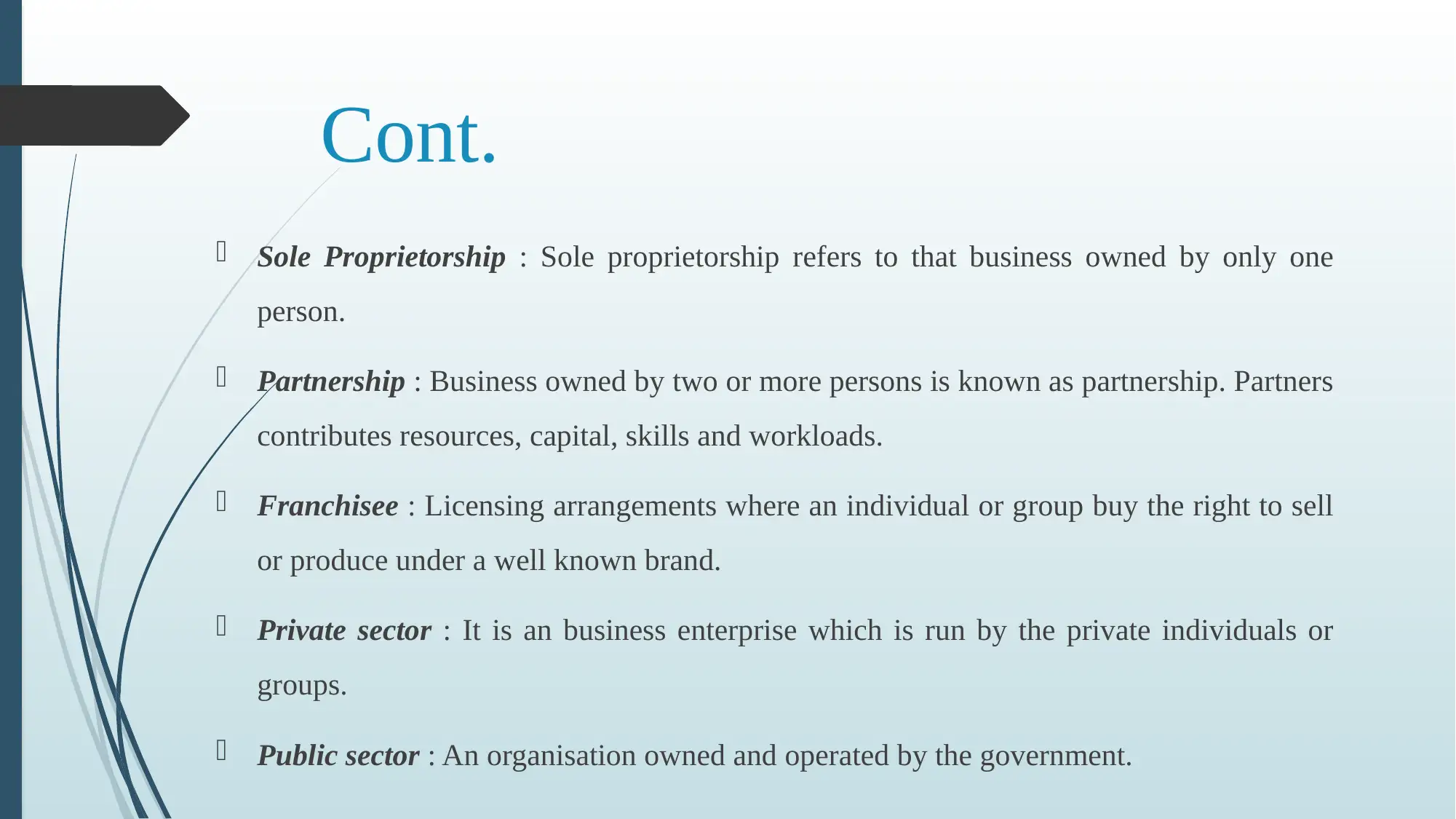
Cont.
Sole Proprietorship : Sole proprietorship refers to that business owned by only one
person.
Partnership : Business owned by two or more persons is known as partnership. Partners
contributes resources, capital, skills and workloads.
Franchisee : Licensing arrangements where an individual or group buy the right to sell
or produce under a well known brand.
Private sector : It is an business enterprise which is run by the private individuals or
groups.
Public sector : An organisation owned and operated by the government.
Sole Proprietorship : Sole proprietorship refers to that business owned by only one
person.
Partnership : Business owned by two or more persons is known as partnership. Partners
contributes resources, capital, skills and workloads.
Franchisee : Licensing arrangements where an individual or group buy the right to sell
or produce under a well known brand.
Private sector : It is an business enterprise which is run by the private individuals or
groups.
Public sector : An organisation owned and operated by the government.
⊘ This is a preview!⊘
Do you want full access?
Subscribe today to unlock all pages.

Trusted by 1+ million students worldwide
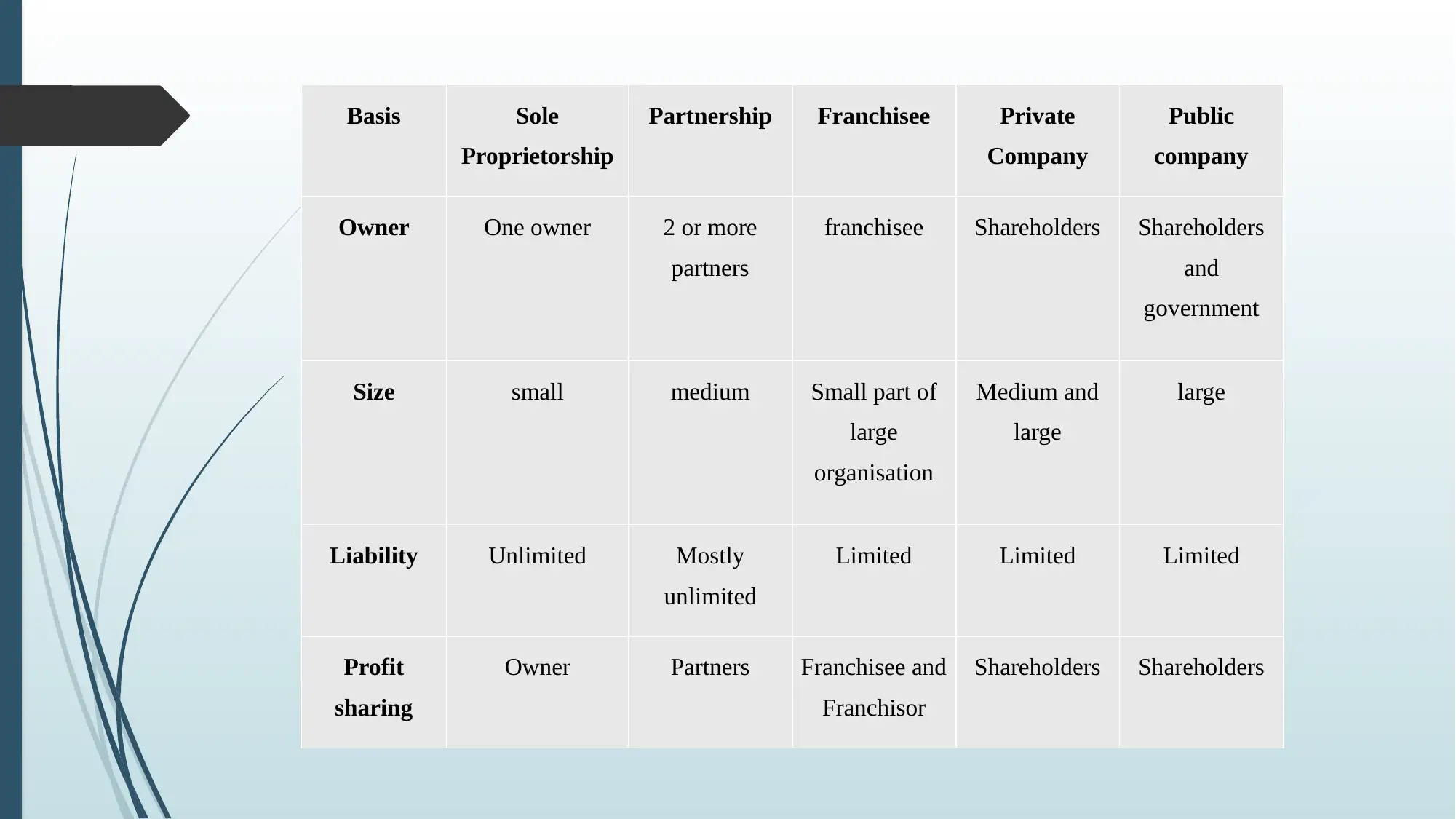
Basis Sole
Proprietorship
Partnership Franchisee Private
Company
Public
company
Owner One owner 2 or more
partners
franchisee Shareholders Shareholders
and
government
Size small medium Small part of
large
organisation
Medium and
large
large
Liability Unlimited Mostly
unlimited
Limited Limited Limited
Profit
sharing
Owner Partners Franchisee and
Franchisor
Shareholders Shareholders
Proprietorship
Partnership Franchisee Private
Company
Public
company
Owner One owner 2 or more
partners
franchisee Shareholders Shareholders
and
government
Size small medium Small part of
large
organisation
Medium and
large
large
Liability Unlimited Mostly
unlimited
Limited Limited Limited
Profit
sharing
Owner Partners Franchisee and
Franchisor
Shareholders Shareholders
Paraphrase This Document
Need a fresh take? Get an instant paraphrase of this document with our AI Paraphraser
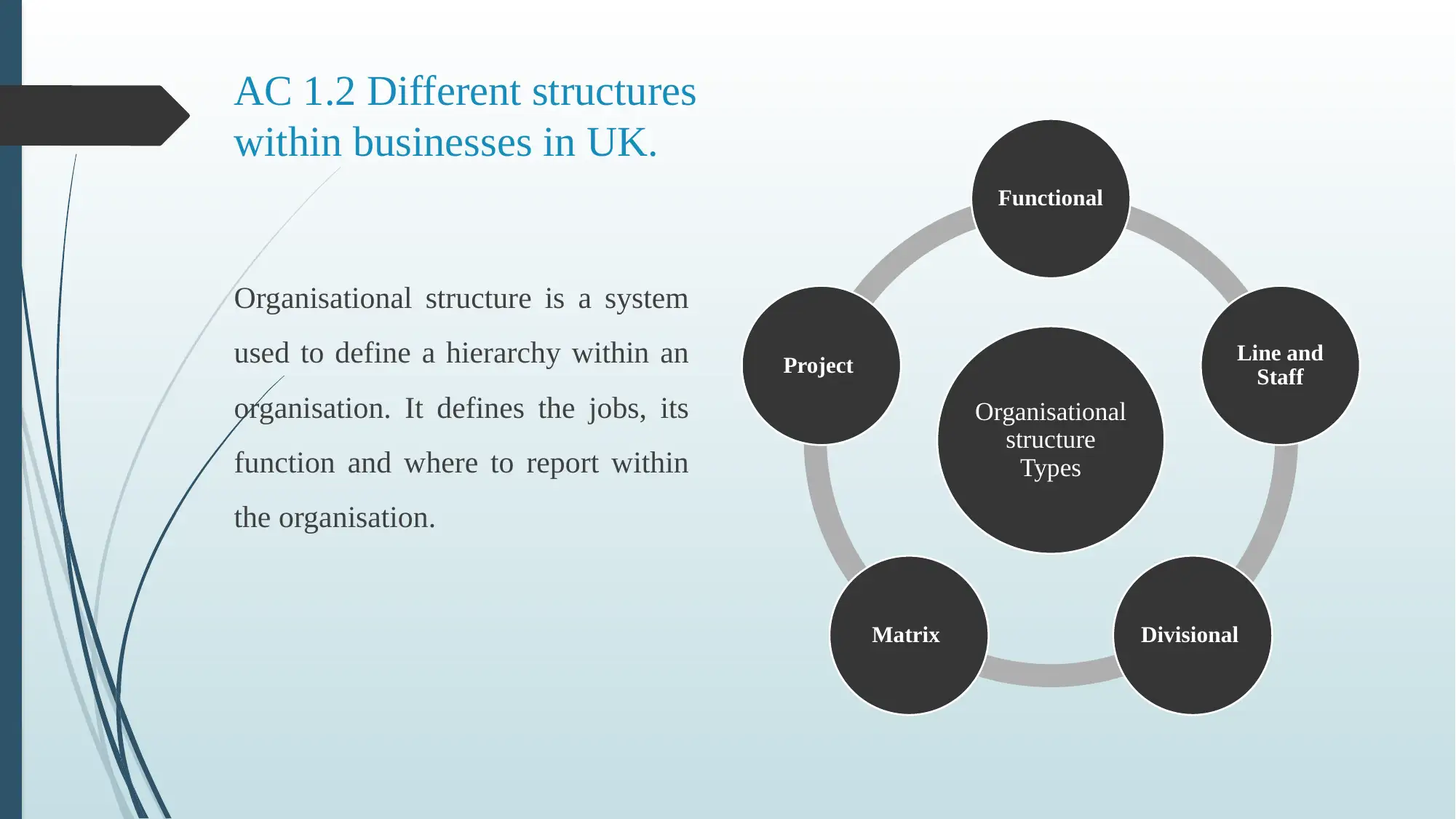
AC 1.2 Different structures
within businesses in UK.
Organisational
structure
Types
Functional
Line and
Staff
DivisionalMatrix
Project
Organisational structure is a system
used to define a hierarchy within an
organisation. It defines the jobs, its
function and where to report within
the organisation.
within businesses in UK.
Organisational
structure
Types
Functional
Line and
Staff
DivisionalMatrix
Project
Organisational structure is a system
used to define a hierarchy within an
organisation. It defines the jobs, its
function and where to report within
the organisation.
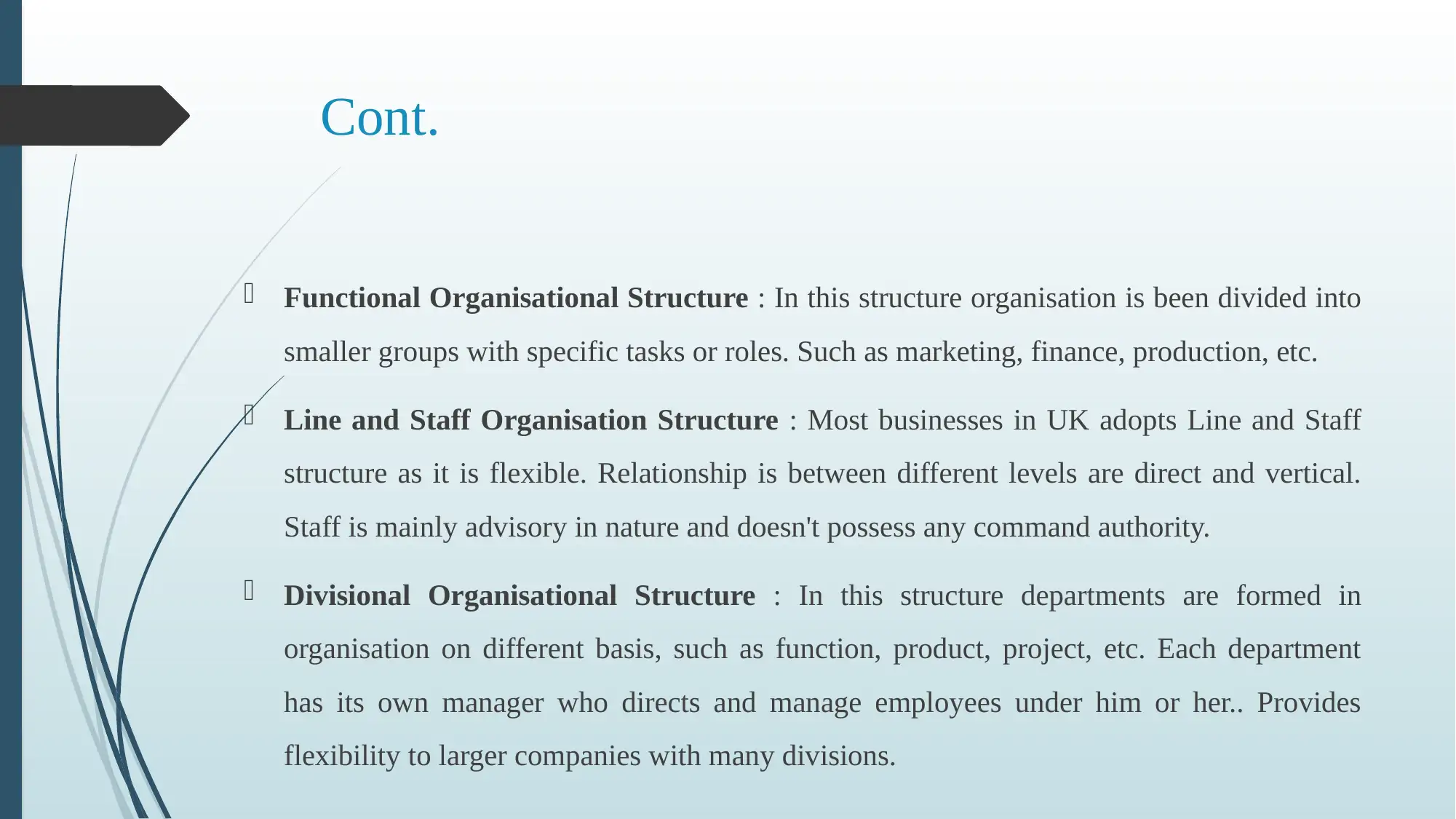
Cont.
Functional Organisational Structure : In this structure organisation is been divided into
smaller groups with specific tasks or roles. Such as marketing, finance, production, etc.
Line and Staff Organisation Structure : Most businesses in UK adopts Line and Staff
structure as it is flexible. Relationship is between different levels are direct and vertical.
Staff is mainly advisory in nature and doesn't possess any command authority.
Divisional Organisational Structure : In this structure departments are formed in
organisation on different basis, such as function, product, project, etc. Each department
has its own manager who directs and manage employees under him or her.. Provides
flexibility to larger companies with many divisions.
Functional Organisational Structure : In this structure organisation is been divided into
smaller groups with specific tasks or roles. Such as marketing, finance, production, etc.
Line and Staff Organisation Structure : Most businesses in UK adopts Line and Staff
structure as it is flexible. Relationship is between different levels are direct and vertical.
Staff is mainly advisory in nature and doesn't possess any command authority.
Divisional Organisational Structure : In this structure departments are formed in
organisation on different basis, such as function, product, project, etc. Each department
has its own manager who directs and manage employees under him or her.. Provides
flexibility to larger companies with many divisions.
⊘ This is a preview!⊘
Do you want full access?
Subscribe today to unlock all pages.

Trusted by 1+ million students worldwide
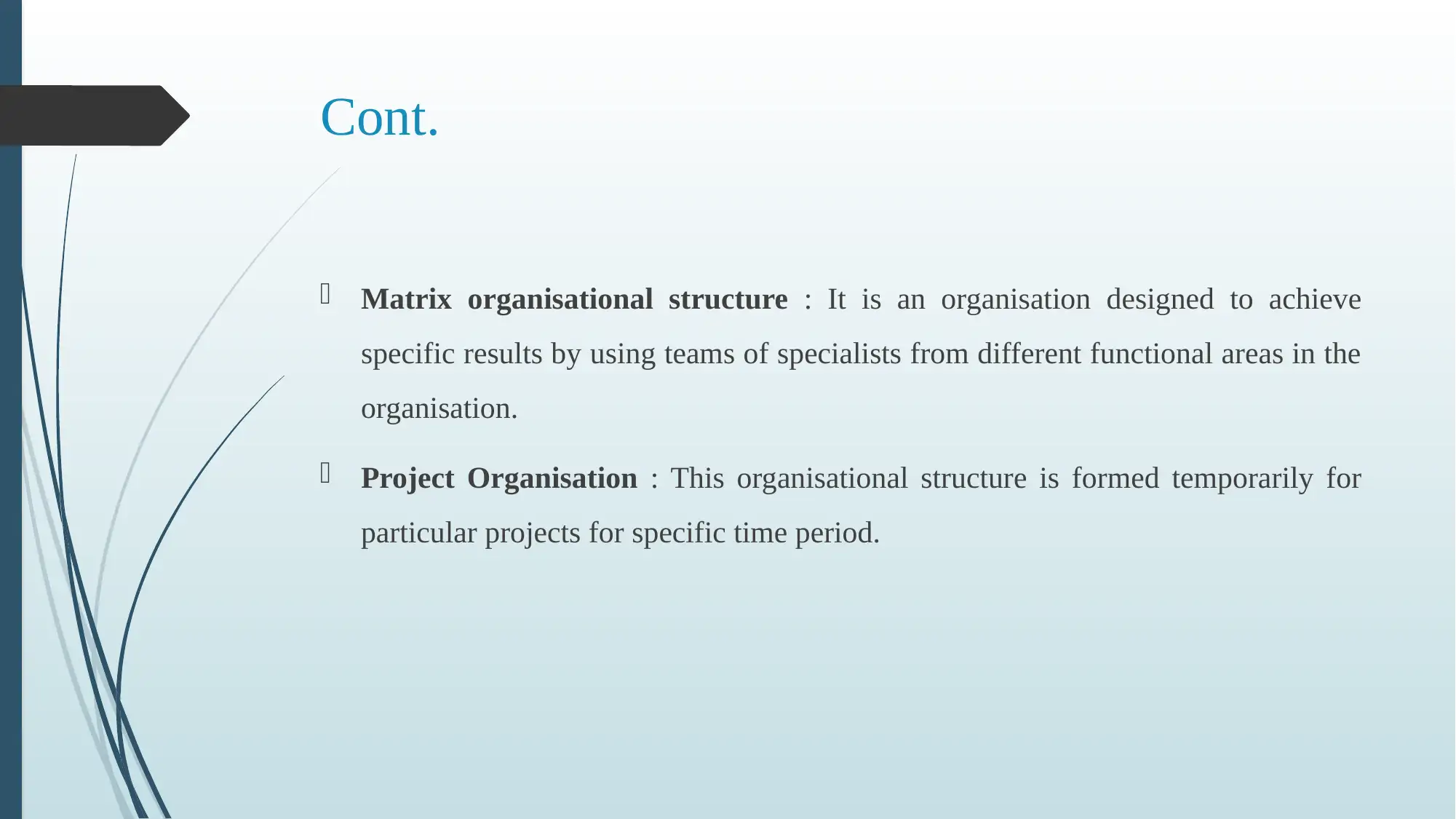
Cont.
Matrix organisational structure : It is an organisation designed to achieve
specific results by using teams of specialists from different functional areas in the
organisation.
Project Organisation : This organisational structure is formed temporarily for
particular projects for specific time period.
Matrix organisational structure : It is an organisation designed to achieve
specific results by using teams of specialists from different functional areas in the
organisation.
Project Organisation : This organisational structure is formed temporarily for
particular projects for specific time period.
Paraphrase This Document
Need a fresh take? Get an instant paraphrase of this document with our AI Paraphraser
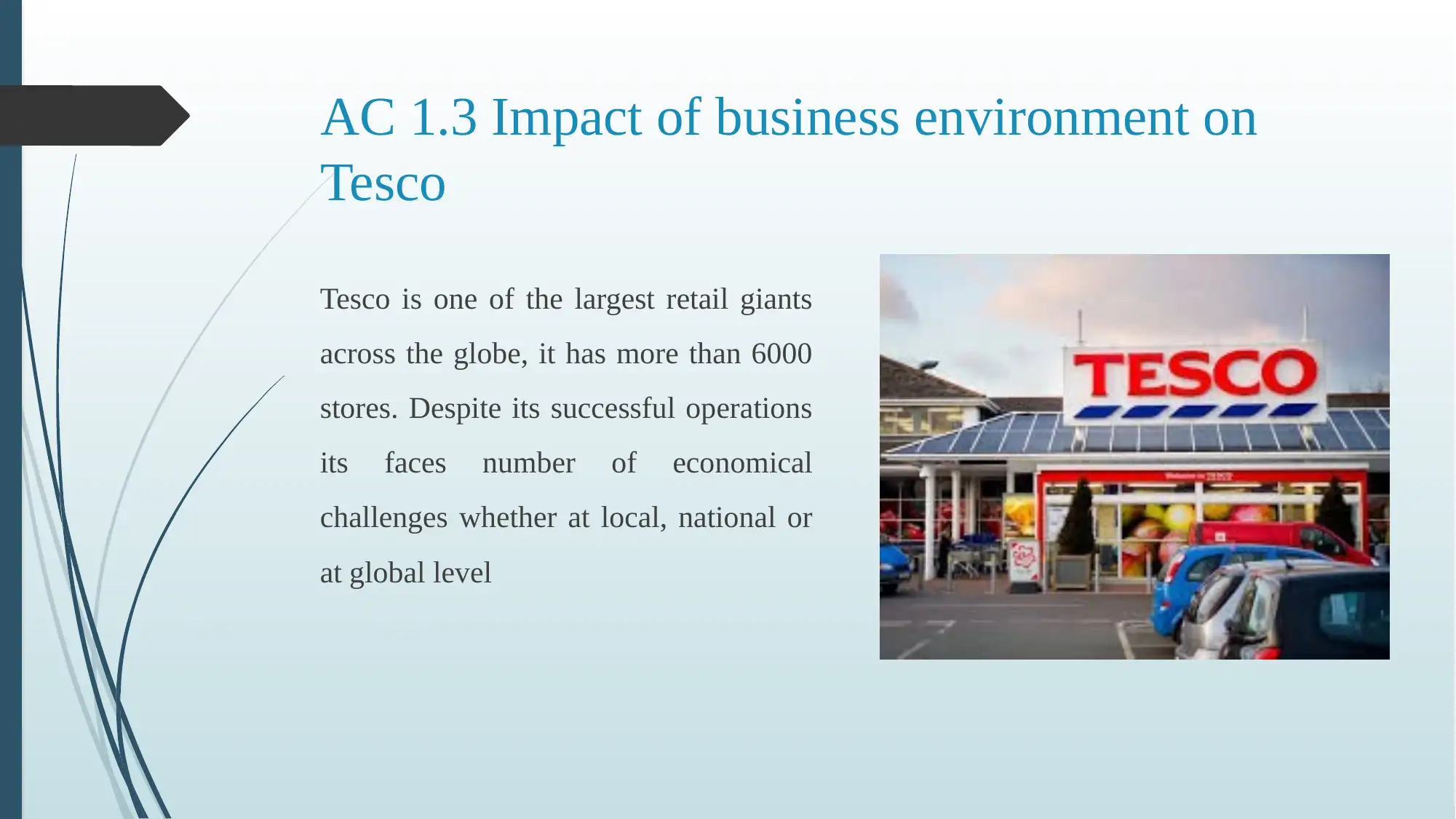
AC 1.3 Impact of business environment on
Tesco
Tesco is one of the largest retail giants
across the globe, it has more than 6000
stores. Despite its successful operations
its faces number of economical
challenges whether at local, national or
at global level
Tesco
Tesco is one of the largest retail giants
across the globe, it has more than 6000
stores. Despite its successful operations
its faces number of economical
challenges whether at local, national or
at global level
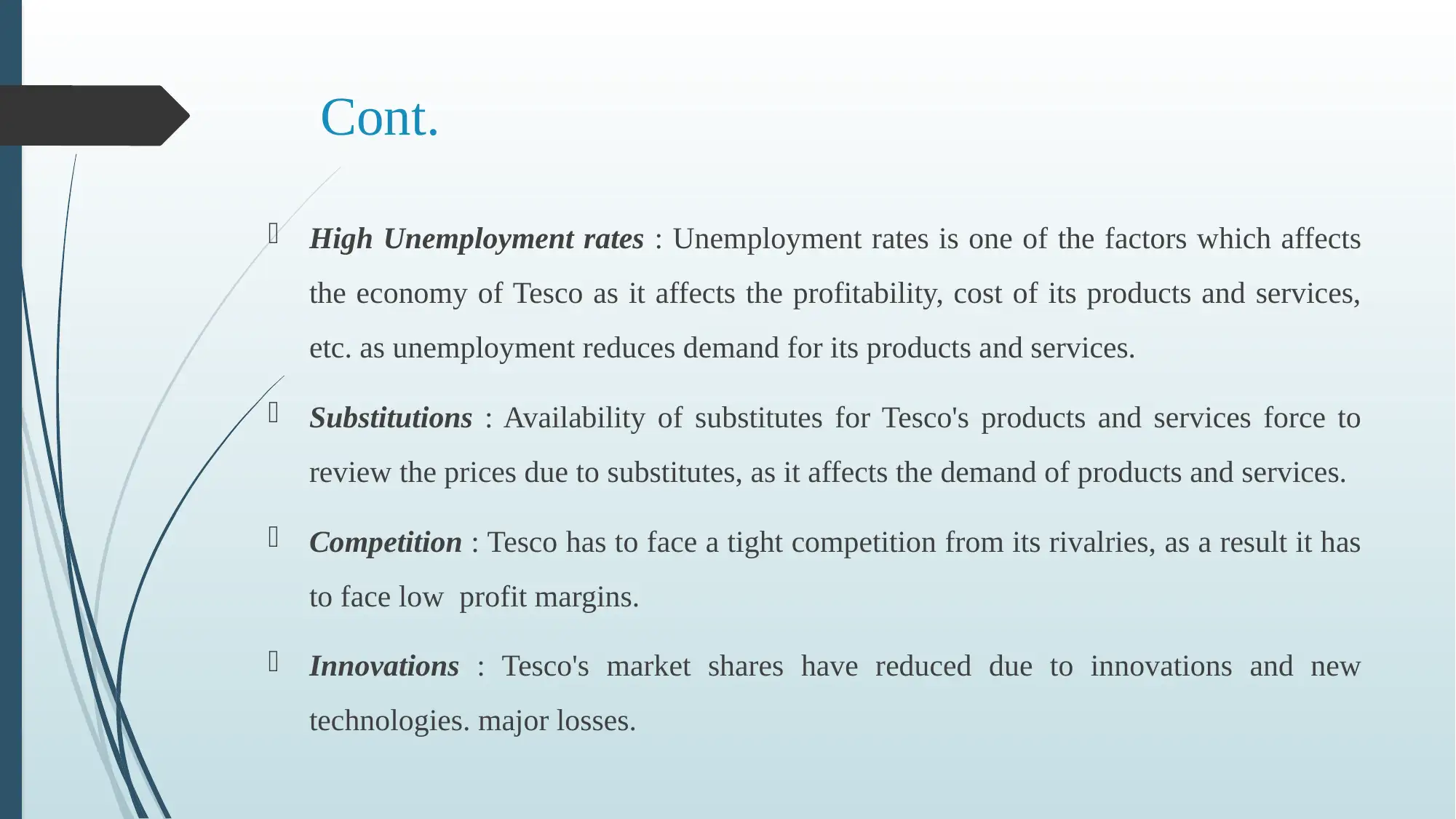
Cont.
High Unemployment rates : Unemployment rates is one of the factors which affects
the economy of Tesco as it affects the profitability, cost of its products and services,
etc. as unemployment reduces demand for its products and services.
Substitutions : Availability of substitutes for Tesco's products and services force to
review the prices due to substitutes, as it affects the demand of products and services.
Competition : Tesco has to face a tight competition from its rivalries, as a result it has
to face low profit margins.
Innovations : Tesco's market shares have reduced due to innovations and new
technologies. major losses.
High Unemployment rates : Unemployment rates is one of the factors which affects
the economy of Tesco as it affects the profitability, cost of its products and services,
etc. as unemployment reduces demand for its products and services.
Substitutions : Availability of substitutes for Tesco's products and services force to
review the prices due to substitutes, as it affects the demand of products and services.
Competition : Tesco has to face a tight competition from its rivalries, as a result it has
to face low profit margins.
Innovations : Tesco's market shares have reduced due to innovations and new
technologies. major losses.
⊘ This is a preview!⊘
Do you want full access?
Subscribe today to unlock all pages.

Trusted by 1+ million students worldwide
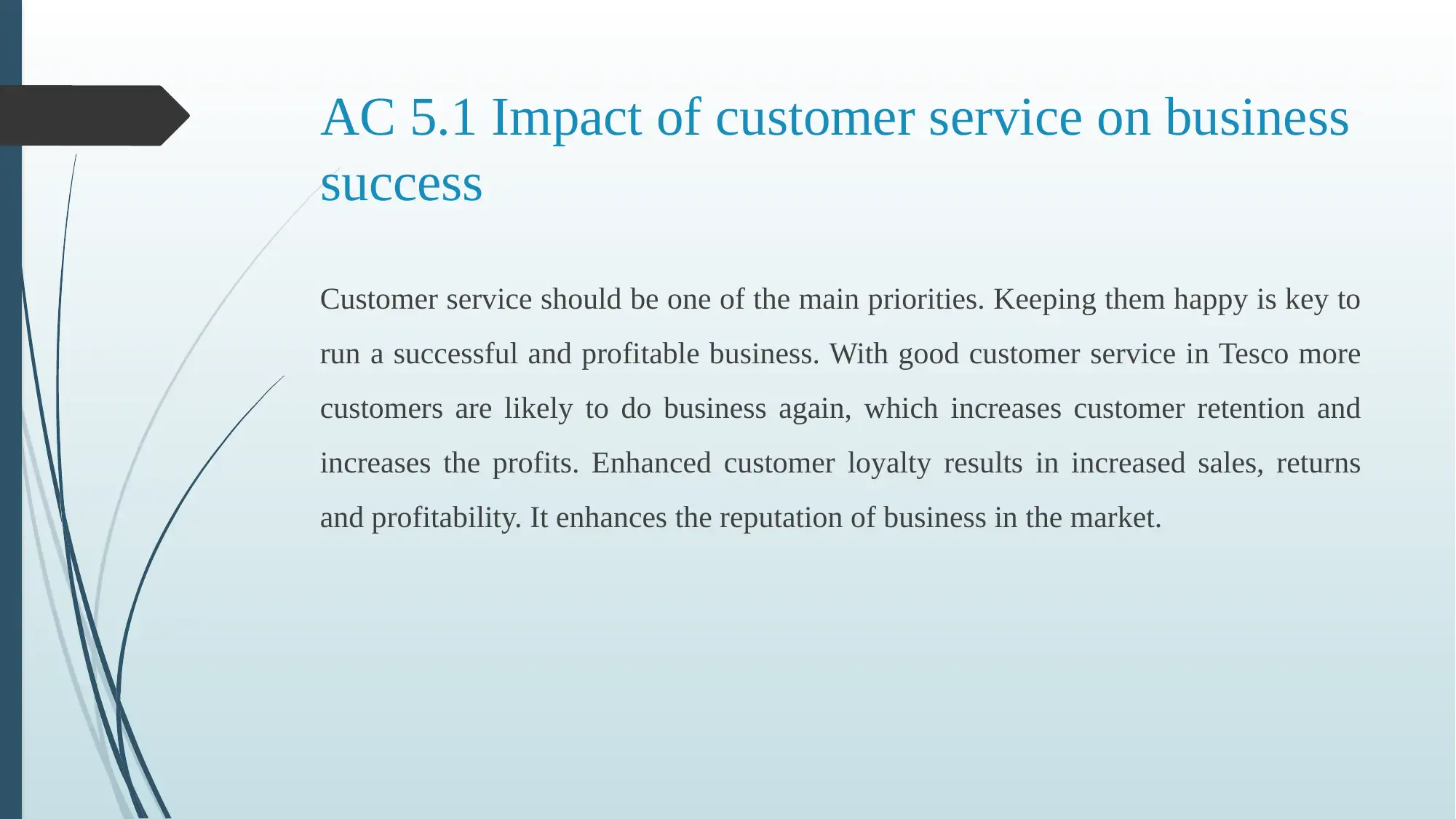
AC 5.1 Impact of customer service on business
success
Customer service should be one of the main priorities. Keeping them happy is key to
run a successful and profitable business. With good customer service in Tesco more
customers are likely to do business again, which increases customer retention and
increases the profits. Enhanced customer loyalty results in increased sales, returns
and profitability. It enhances the reputation of business in the market.
success
Customer service should be one of the main priorities. Keeping them happy is key to
run a successful and profitable business. With good customer service in Tesco more
customers are likely to do business again, which increases customer retention and
increases the profits. Enhanced customer loyalty results in increased sales, returns
and profitability. It enhances the reputation of business in the market.
Paraphrase This Document
Need a fresh take? Get an instant paraphrase of this document with our AI Paraphraser
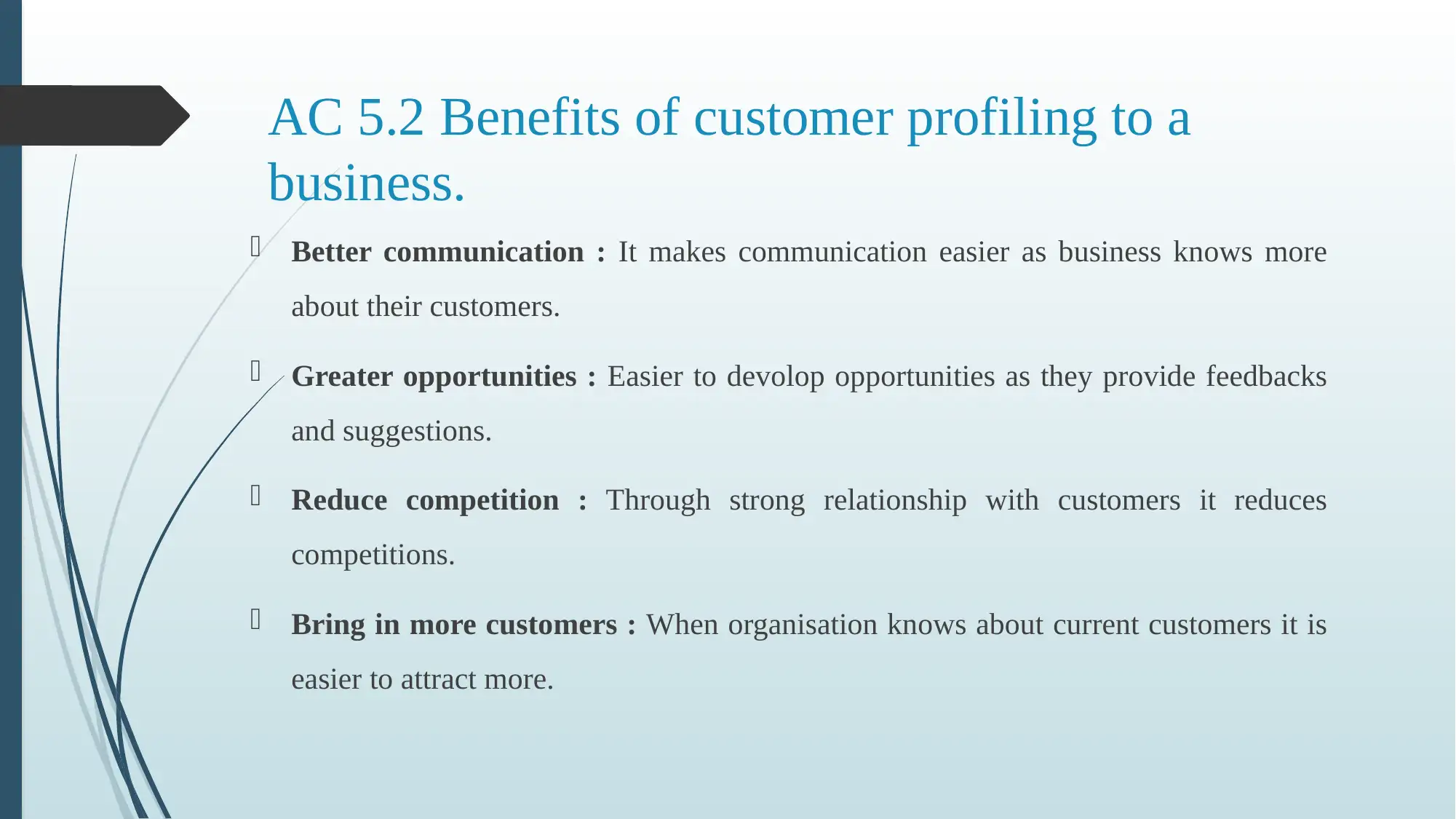
AC 5.2 Benefits of customer profiling to a
business.
Better communication : It makes communication easier as business knows more
about their customers.
Greater opportunities : Easier to devolop opportunities as they provide feedbacks
and suggestions.
Reduce competition : Through strong relationship with customers it reduces
competitions.
Bring in more customers : When organisation knows about current customers it is
easier to attract more.
business.
Better communication : It makes communication easier as business knows more
about their customers.
Greater opportunities : Easier to devolop opportunities as they provide feedbacks
and suggestions.
Reduce competition : Through strong relationship with customers it reduces
competitions.
Bring in more customers : When organisation knows about current customers it is
easier to attract more.
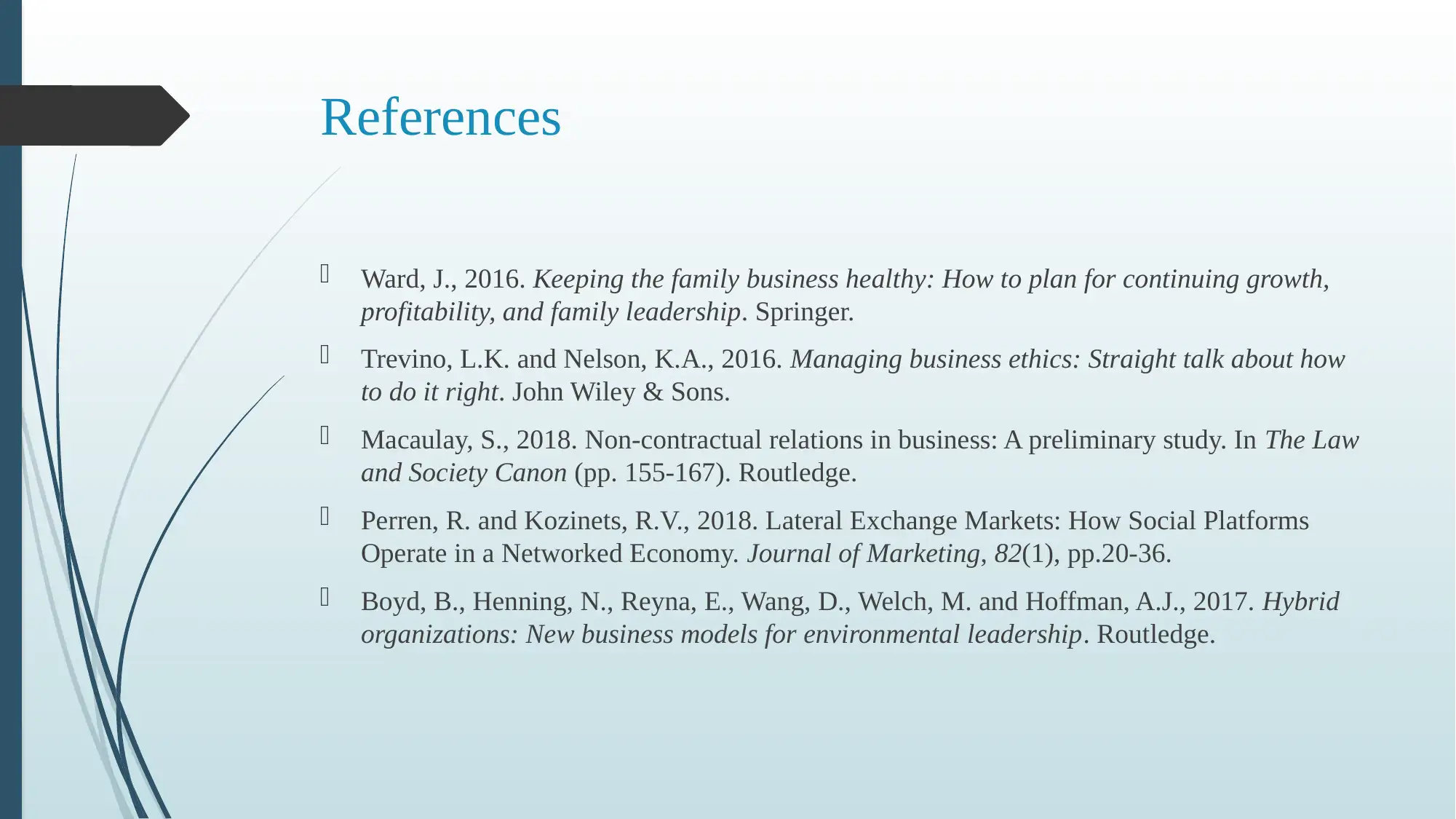
References
Ward, J., 2016. Keeping the family business healthy: How to plan for continuing growth,
profitability, and family leadership. Springer.
Trevino, L.K. and Nelson, K.A., 2016. Managing business ethics: Straight talk about how
to do it right. John Wiley & Sons.
Macaulay, S., 2018. Non-contractual relations in business: A preliminary study. In The Law
and Society Canon (pp. 155-167). Routledge.
Perren, R. and Kozinets, R.V., 2018. Lateral Exchange Markets: How Social Platforms
Operate in a Networked Economy. Journal of Marketing, 82(1), pp.20-36.
Boyd, B., Henning, N., Reyna, E., Wang, D., Welch, M. and Hoffman, A.J., 2017. Hybrid
organizations: New business models for environmental leadership. Routledge.
Ward, J., 2016. Keeping the family business healthy: How to plan for continuing growth,
profitability, and family leadership. Springer.
Trevino, L.K. and Nelson, K.A., 2016. Managing business ethics: Straight talk about how
to do it right. John Wiley & Sons.
Macaulay, S., 2018. Non-contractual relations in business: A preliminary study. In The Law
and Society Canon (pp. 155-167). Routledge.
Perren, R. and Kozinets, R.V., 2018. Lateral Exchange Markets: How Social Platforms
Operate in a Networked Economy. Journal of Marketing, 82(1), pp.20-36.
Boyd, B., Henning, N., Reyna, E., Wang, D., Welch, M. and Hoffman, A.J., 2017. Hybrid
organizations: New business models for environmental leadership. Routledge.
⊘ This is a preview!⊘
Do you want full access?
Subscribe today to unlock all pages.

Trusted by 1+ million students worldwide
1 out of 13
Related Documents
Your All-in-One AI-Powered Toolkit for Academic Success.
+13062052269
info@desklib.com
Available 24*7 on WhatsApp / Email
![[object Object]](/_next/static/media/star-bottom.7253800d.svg)
Unlock your academic potential
Copyright © 2020–2025 A2Z Services. All Rights Reserved. Developed and managed by ZUCOL.





